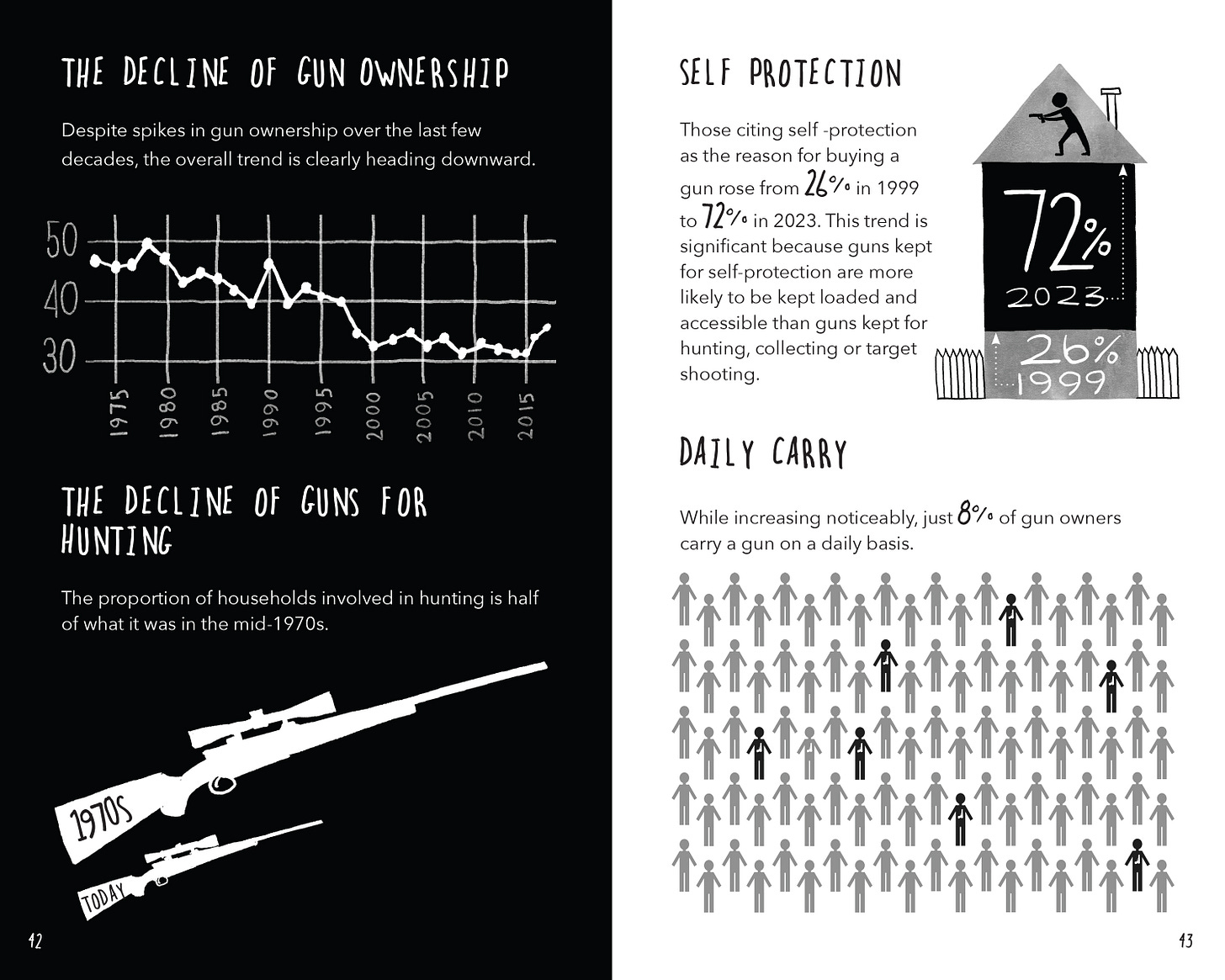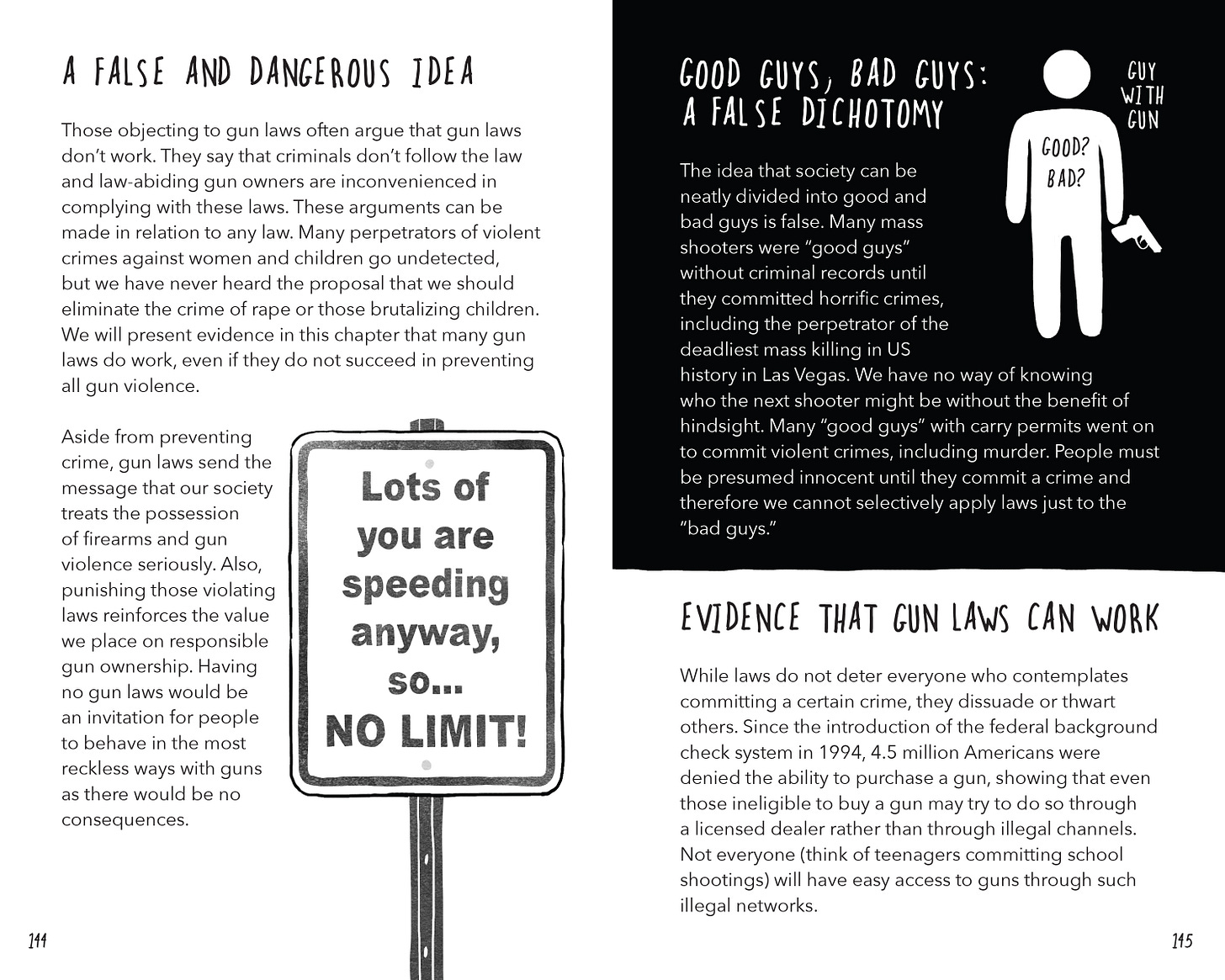This is Not the Time to Abandon Gun Safety Policies
Rolling back regulations and turning a blind eye will simply make things worse
By: Thomas Gabor, Ph.D. and Violet Lemay
Gun violence is one of the major issues of our time, and the United States is a global outlier in its gun ownership levels, permissive gun laws, and gun deaths. Annual gun deaths have approached 50,000 in the last few years1 and more than double that number experience nonfatal gunshot wounds. Mass shootings exceed one per day.2
The Trump administration’s backsliding on gun safety initiatives exposes the gravity of the problem.
Former Surgeon General Vivek Murthy’s advisory proclaiming gun violence as a public health crisis has been removed from the Health and Human Services’ website. The White House Office of Gun Violence Prevention has been shuttered, and President Trump has signed an executive order directing Attorney General Pam Bondi to review and potentially roll back gun control measures implemented by the Biden administration on such things as expanded background checks and gun dealer oversight. Kash Patel, who has expressed hostility toward the Bureau of Alcohol, Tobacco, Firearms, and Explosives now heads this enforcement agency (update). And Republicans in Congress have introduced concealed carry reciprocity (CCR) legislation that would allow individuals carrying guns in a state not requiring any license or training to carry their guns into states with stricter gun laws.
In our book, Gun Violence 101: A Graphic Guide to How Gun Safety Policies Save Lives, we illustrate the extent to which the U.S. is an aberration among advanced countries both in gun mortality and policies.
Examples of the seriousness of America’s unique gun violence problem:
Gun violence has now touched most Americans. Over half of all Americans have been personally affected by gun violence, meaning they have been threatened with a gun or been shot, witnessed a shooting, or have a family member who was shot.3
Many Americans have altered their behavior due to their fear of getting shot. A third of Americans indicate that their fear of a shooting leads them to avoid certain spaces or events.4
The U.S. is a global outlier not just in the size of its private gun stock, but in the weakness of its laws relating to the acquisition, carrying, and storage of guns. Americans account for 5% of the world’s population but own nearly half of the world’s privately-held firearms. There are over 120 guns for every 100 people, well ahead of the next most armed countries — Yemen, Montenegro, and Serbia. By contrast, Japanese civilians own less than one gun per 100 residents.5
All states allow the carrying of guns for self protection, and over half the states do not even require permits, background checks, or firearm training to do so. By contrast, countries like Canada and Australia place strict restrictions on gun carrying and do not permit carrying for self defense under normal circumstances.6
Unlike other advanced countries, the U.S. has no national laws requiring the safe storage of guns. Contrast that with Germany, where firearm owners must provide authorities with proof of measures taken for the safe storage of their firearms. Guns must be stored separately from ammunition or in a secure container.7
The U.S. is the only advanced country that does not ban or severely restrict assault-style weapons designed for war (e.g., AR-15s). The number of AR-15s in the hands of Americans is now 50 times what it was in the mid-1990s.8 Most of the deadliest mass shootings in the last decade were committed using these weapons.
Guns are the #1 cause of death of children and teens in the U.S. Historically, car crashes and cancer were the leading causes of death for those under 20 years of age. This is still the case in other advanced countries, however in the U.S. gun deaths for this age group have spiked by 87% from 2011-2021.9
More Americans favor stricter laws. Six in ten Americans favor stricter gun laws, and just a small minority favor more relaxed laws.10 More than six times as many Americans say it is too easy to buy a gun as those who say it is too hard to do so. Still, the current administration and many states have been or are looking at loosening gun laws.
Gun violence is also a serious issue in rural areas. One pernicious myth is that gun violence is primarily a problem in inner cities and hence is not a national problem. In fact, in 2016-2020, of the 20 U.S. counties with the most gun homicides per capita, 13 were rural.11 In 2020, the gun death rate per 100,000 residents was 40% higher in rural communities than it was in large metropolitan areas.
Gun purchases for self protection have nearly tripled. Over the last 25 years, those buying guns for self defense have increased from a quarter to three-quarters of gun buyers.12 This trend is significant because guns bought for self protection are more likely to be carried in public or to be stored loaded and accessible in the home. These changes in the handling of guns raise the risks of their use in arguments and suicide attempts, by minors who gain unauthorized possession, or in deadly accidents.
Many gun laws have been weakened in recent years. There is a general belief that America’s past was marked by a complete absence of gun regulation. In fact, frontier towns, like Dodge City, often prohibited gun carrying.
In the 1800s and early 1900s, over 40 states banned or restricted the carrying of guns due to rising violence.13 Currently, residents of every state can carry a concealed weapon, and half the states require no firearms training or education to carry guns. The myth that America’s past was marked by a complete absence of regulation (the “Wild West”) fuels the view that loosening gun laws today is a return to America’s roots. It is not.
Gun violence is a profoundly serious problem in the U.S. Rolling back regulations and turning a blind eye to the scourge, purely for partisan or ideological reasons, will simply make things worse.
Notes:
1. National Center for Health Statistics, All Injuries, CDC, National Center for Health Statistics, All Injuries, CDC, https://www.cdc.gov/nchs/fastats/injury.htm
2. Gun Violence Archive, “Past Summary Ledgers,” https://bit.ly/DoubledMSs
3. Shannon Schumacher et al., “Americans’ Experiences with Gun-Related Violence, Injuries, and Deaths.” Kaiser Family Foundation, April 11, 2023, https://bit.ly/Over_Half
4. J. Ducharme, “A Third of Americans Avoid Certain Places Because They Fear Mass Shootings,” Time, August 15, 2019.
5. Aaron Karp, Estimating Global Civilian-Held Firearms Numbers (Geneva: Small Arms Survey, 2018), https://bit.ly/4fDcgl5
6. Dylan Matthews. “Here’s How Gun Control Works in Canada,” Vox, October 24, 2014, https://bit.ly/GunCarry_Canada
7. Federal Ministry of Justice, Weapons Act, Sections 36 and 53, https://bit.ly/FirearmStorage_German
8. Steve Kraske and Elizabeth Ruiz, “U.S. Civilians Own an Estimated 20 million AR-15s. How the Rifle Became a Political Symbol.” NPR, September 29, 2023, https://bit.ly/4dHePk7
9. Matt McGough et al., “Child and Teen Firearm Mortality in the US and Peer Countries,” Kaiser Family Foundation, July 18, 2023, https://bit.ly/LeadingCause_Under20
10. Katherine Schaeffer, “Key Facts About Americans and Guns,” https://www.pewresearch.org/short-reads/2023/09/13/key-facts-about-americans-and-guns/
11. David Correa and Nick Wilson, “Gun Violence in Rural America,” The Center for American Progress, September 26, 2022, https://www.americanprogress.org/article/gun-violence-in-rural-america/
12. Sara Goo, “Why Own a Gun? Protection is Now Top Reason,” Pew Research Center, May 9, 2013, https://www.pewresearch.org/fact-tank/2013/05/09/why-own-a-gunprotection-is-now-top-reason/; Katherine Schaeffer, “Key Facts About Americans and Guns,” Pew Research Center, September 13, 2023, https://www.pewresearch.org/short-reads/2023/09/13/key-facts-about-americans-and-guns/
13. Thomas Gabor and Violet Lemay, Gun Violence 101: A Graphic Guide to How Gun Safety Policies Save Lives, (Miami: Mango, 2025), Chapter 3.
Thomas Gabor, Ph.D. is President of Thomas Gabor, LLC, a criminal justice consulting firm. A Professor of Criminology at the University of Ottawa, Canada, for 30 years, Dr. Gabor is co-author of the new #1 Amazon release, Gun Violence 101, and has published five other books on gun violence, including American Carnage with Fred Guttenberg, is a frequent public speaker, and is an international criminal justice consultant.
Violet Lemay is the author/illustrator of eight books, including Gun Violence 101, and has illustrated 40 books by other authors. Her picture book biography of a student victim of the Uvalde school shooting, Alithia Ramirez Was an Artist, won nine awards in 2024. A former editorial illustrator, book designer and art director, Violet and her husband Thomas, both U.S. citizens, live in New Zealand.
Top photo by Arina Dmitrieva; via Pexels; illustrations by Violet Lemay from the book, Gun Violence 101: A Graphic Guide to How Gun Safety Policies Save Lives.








